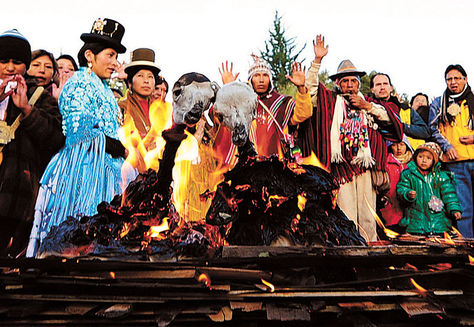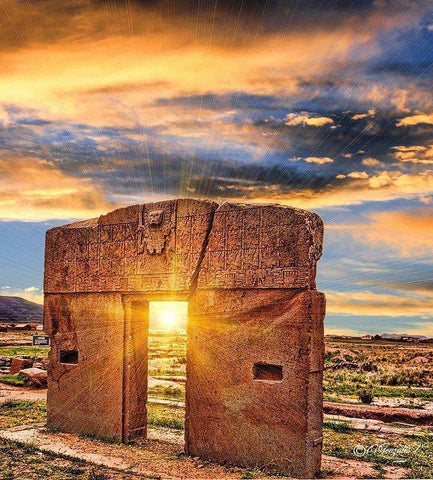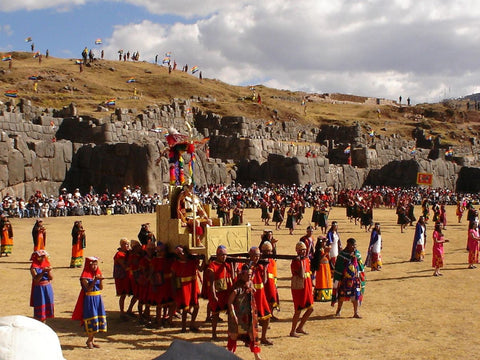
2019 ??? Nooo, in Bolivia for the Aymara people this is the year 5527.
On 21 June, the Andean New Year is celebrated in South America's most indigenous country.
It is a ritual that goes on for thousands of years and still practiced nowadays by many people with ceremonies that take place in different places considered sacred for people belonging to the Aymara ethnic group. The new year count is made by adding 5000 years to the period since 1492, the beginning of the European invasion.
People will be gathering with Andean priests to receive the new sun with respect and devotion while making offerings to it and showing the value it has for them. All together they will receive the first rays, the energies of the Tata Inti, the father Sun, in the palms of their hands so that everyone will feel the energy of a new cycle.
This is a powerful and growing moment.

June 21 is a special day in Bolivia, with a holiday in between, the country paralyzes public and private activities to celebrate the arrival of the "Aymara New Year" now considered the Amazonian Andean New Year, also known as the "Willakuti" or "Return of the Sun".
The "Willakuti" central event is centered in Tiwanaku, where the Puerta del Sol is located, a pre-Inca city with an elevation of almost 12750 ft about 70 km from La Paz.

The city of Tiwanaku, capital of a powerful pre-Hispanic empire that dominated a large area of the southern Andes and beyond, reached its apogee between 500 and 900 AD. Its monumental remains testify to the cultural and political significance of this civilization, which is distinct from any of the other pre-Hispanic empires of the Americas. Since 2000 is listed in the UNESCO WORLD HERITAGE SITES
Amazonian Andean New Year
The Andean Peoples, Amazonian, Guaranis, Kollas, Mapuches among other cultures, commemorate on this date the new year, celebrate means renewing a commitment to continue raising the ecosystems that coexist thanks to the benevolence of the Pachamama and the Inti Tata, those who are offered the sacred coca, and alcohol for the “Challa”, a ceremony of reciprocity that is based on the act of watering the land or other good with alcohol and symbolic elements. as a symbol of reverence.

Amazonian Andean New Year celebration is linked to an astronomical reference that is the solstice, source of energy and spiritual renewal, and is recorded as a natural phenomenon between June 20 and June 23 in the southern hemisphere and begins a new agricultural cycle, it is a luni-solar calendar, as it is governed by the phase of the Moon and the journey of the Earth around the Sun. From 22nd June the 13 months are counted, each of 28 days, counting 364 days of the new year, 21st June is the 365th day, which is dedicated exclusively to the New Year's Day and begins winter in the south of the planet Earth, being this day the one with the longest night and the shortest day.
Within the Andean calendar and the southern hemisphere, there are two solstices, the winter solstices, and the summer solstices. The celebration of the mara t'aqa corresponds to that of winter, where the height, the front and the movement of the sun condense their maximum expression and significance in the Andes and the southern hemisphere, the period of the juyphi-pacha, in which the frost when reaching its maximum expression.
Written by: Alex Brandino
Comments will be approved before showing up.